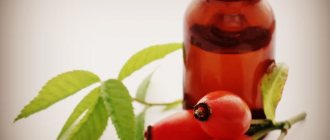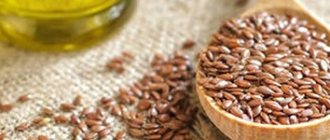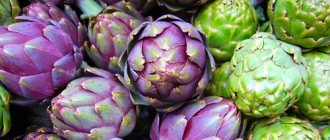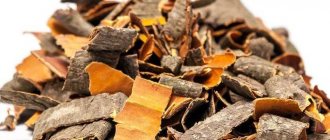Coffee and tea are not suitable for everyone. The caffeine contained in these drinks limits their use by people with high blood pressure, nervous system excitability, pregnancy and many other situations. Fortunately, there is an adequate replacement that will not only allow you to enjoy a pleasantly velvety taste close to coffee, but also have a good effect on your health. We are talking about chicory, this article is about the medicinal properties of its root, how it is beneficial for the body and weight loss, and how to drink it for the best results.
Useful properties of chicory
Chicory normalizes metabolism in the body and is able to remove all toxins from the body. Chicory cleanses the kidneys and helps improve the condition of diabetics. In addition, it is used to improve blood composition. Chicory stimulates appetite, improves intestinal activity, and is also an excellent remedy for heartburn. Due to the ability of chicory to increase the overall tone of the body, it is used instead of coffee beans. A drink made from chicory cleanses blood vessels and relieves tiredness and tiredness.
Chicory has anti-inflammatory and antibacterial properties. It is used as an antipyretic for colds and other diseases.
The plant contains a large amount of inulin, a substance that lowers blood sugar.
Read more: Inulin - what is it? Benefits and harms, instructions
General information about chicory, what it is
Chicory is a genus of herbaceous biennial or perennial plants from the Asteraceae family. It includes 10 species: 8 wild and 2 cultivated. It is distributed in areas of temperate and tropical climate zones.
Habitat: forest edges, meadows, edges of roads and arable lands. Separate fields are allocated for cultivated species.
The grass has a long tap root that can extend 15 m into the soil.
Compound
Young leaves are rich in ascorbic acid, natural carotene, and potassium salts. The calorie content of the product is 21 kcal per 100 g, which allows it to be classified as dietary.
The root contains:
- inulin;
- fructose;
- glycoside intibin;
- carotene;
- vitamins B and C;
- microelements - Na, K, Ca, Mg, P, Fe;
- pectin;
- organic acids;
- tannins;
- resin.
Chicory contains inulin, fructose and carotene.
Varieties
For use in cooking, two types are cultivated - ordinary and salad. From the latter, young leaves are used for food.
Salad comes in 2 varieties:
- radicchio, or red;
- witloof (white) - grown without access to light, as a result of which the leaves get rid of the characteristic bitterness.
Depending on the method of processing the root, there are 3 forms of the product:
- Liquid. An extract from it is used in medicine and cooking as a flavoring agent and additive to sauces.
- I'm grinding. The rhizome is washed, dried, fried in a special oven and ground into powder. The drink is drunk from it after infusion in hot or cold water.
- Soluble. It is obtained after spraying in a special drying apparatus. The powder does not need to be infused for a long time before use, like ground extract, and its shelf life is longer than that of a liquid extract.
Indications for use
It is recommended to use the plant as food or externally for:
- depression, low mood, fatigue;
- elevated blood sugar levels;
- dysbacteriosis or constipation;
- weakened immune system;
- atherosclerosis, ischemia, hypertension, tachycardia;
- pregnancy;
- diseases of the pancreas.
It is recommended to use chicory for depression and fatigue.
Benefits of chicory
Such a wonderful plant as chicory is widely used to treat many diseases. Its benefits are due to the high content of various microelements that have immunostimulating properties. In addition, regular consumption of chicory prevents the growth of pathogens and enhances metabolism in the human body. Thanks to its unique chemical composition, this wonderful plant boasts choleretic, diuretic, anti-inflammatory, mild sedative and wound-healing effects.
What are the benefits of chicory? It has a beneficial effect on reducing blood glucose levels, normalizes pancreatic function, and also enhances cardiac activity. Chicory is often used as an antimicrobial and astringent. Along with this, it is endowed with anti-inflammatory, soothing, antipyretic and vasodilating properties. There is no better drink for diabetics, since chicory can replace both sugar and starch. Chicory is generally indicated for many gastrointestinal problems. It also has a general strengthening effect on human immune mechanisms. This medicinal plant promotes the healing of wounds and eczema, and also has a weak antitumor effect.
pharmachologic effect
Depending on the mechanism of influence on the body, plant-based preparations have:
- direct effect - satisfying hunger, lowering blood sugar levels;
- secondary - reducing tissue swelling in patients suffering from cardiovascular diseases;
- indirect - strengthening the immune system through improving the functioning of the gastrointestinal tract, active absorption of vitamins and microelements.
For patients with diabetes and obesity
The root contains large quantities of inulin, a plant sweetener. It helps reduce the proportion of “bad” cholesterol, which has a beneficial effect on the body in the treatment of diabetes. With regular consumption, the drink improves digestion and causes a feeling of fullness. Therefore, the product is recommended for obesity.
Chicory contains insulin, which is used in the treatment of diabetes.
For the cardiovascular system
Drinks and dishes made from herbs dilate blood vessels and increase the amplitude of heart contractions. To enhance their medicinal properties, they are consumed with other products, such as ginger.
Due to its similar taste, the drink is recommended for patients with cardiovascular diseases as a coffee substitute.
For the digestive system
Herbal decoctions have a beneficial effect on the intestinal microflora and prevent the development of inflammatory processes in it. Inulin promotes the proliferation of bifidobacteria and the absorption of calcium.
For the nervous system
The beneficial substances of the plant have a calming effect on the body. It contains riboflavin, thiamine and biotin, which provide energy without stimulating the nervous system (unlike caffeine).
Liver
Inulin helps cleanse the choleretic tract of the organ. Thiamine and riboflavin regulate the release of histamines. Ascorbic acid strengthens the vessels through which blood enters the liver. Resins and essential oils protect organ cells, making their membranes stronger.
Chicory helps cleanse the liver.
Endocrine system
The product affects the normalization of hormonal levels. The selenium present in its composition promotes the production of testosterone in the male body. This, in turn, increases potency. Vitamin B5 stimulates the production of corticosteroids and adrenal hormones.
Antioxidant action
Carotene is responsible for this effect on the body. It prevents skin aging, a decrease in its elasticity, acts as an immunomodulator, stimulating the cell response to the appearance of pathogens.
Preventing Chronic Diseases and Cancer
The plant prevents the occurrence of gastritis or colitis. The latter often cause congestion in the liver.
Inulin stimulates the production of butyrate in the intestines - a substance that protects cells from any harmful effects. By eliminating damaging factors, it helps prevent colon cancer. Studies have proven that adding the product to the diet for 2 years reduces the overall risk of malignant tumors.
Reducing cholesterol
The natural polysaccharide inulin accelerates metabolic processes, which leads to the dissolution of cholesterol plaques on the walls of blood vessels. Microelements - potassium, sodium, magnesium - have a beneficial effect on the functioning of the heart, increasing blood flow. This in turn promotes the destruction of plaques. By preventing obesity and hypertension, chicory also helps lower cholesterol levels.
Chicory prevents obesity.
Supports Kidney Health
The plant enhances the diuretic effect, improving kidney function. The beneficial substances it contains cleanse them of toxins.
Chicory during pregnancy
Due to the fact that this plant contains a significant amount of useful microelements and various components, chicory during pregnancy is prescribed as an effective tonic. Healthy drinks based on such a plant can gently remove toxins and excess fluid from the body, preventing swelling, heartburn and nausea. In addition, it has an excellent effect on the intestines, being an excellent stimulant for regular bowel movements. Taking small amounts of chicory regularly will increase your appetite.
Such an amazing plant will allow you to easily give birth to a healthy child, since it effectively cleanses the blood of harmful impurities that can be extremely dangerous during such an important period.
Can nursing mothers drink chicory?
Doctors still do not recommend taking such a common medicine as chicory, which has a high content of useful substances and vitamins, for nursing mothers. It has been proven that some components have a strong stimulating effect on infants. In addition, in some cases, a significant decrease in lactation was recorded. Despite the fact that chicory has a tonic and immunological effect on the mother’s body, through breast milk it can cause severe allergies in the baby.
Customer Reviews
What do real people say about chicory?
Feedback on the forum
Feedback on the forum
Feedback on the forum
Feedback on the forum
Feedback on the forum
Feedback on the forum
There are many reviews, and they are all positive.
Chicory for weight loss
Chicory has long been deservedly famous for its unique healing properties. One of the main effects on the body is the effect of easy weight loss. The roots of the plant help cleanse the blood of harmful impurities and remove toxins, which leads to weight loss.
To combat extra pounds, we recommend preparing a special remedy. Take 1 teaspoon of crushed chicory roots, add 500 grams of water and boil over medium heat for 10 minutes. After this, the resulting healing decoction should be strained and set aside to cool. To get quick results, take 100 grams of the drink up to three times a day. The main thing is to remember that you should drink it 30 minutes before meals. In addition to noticeable weight loss, chicory has a generally healing effect on the entire body. In addition, it is able to cope with severe sweating and restore liver function.
Effect on the human body
The effect of plant products on the human body may depend on his gender or age.
Female
For pregnant women, the drink helps relieve swelling due to its diuretic effect. In addition, chicory prevents toxicosis and improves appetite. Doctors recommend consuming 1 cup per day. The same norm is considered acceptable for nursing mothers.
In pregnant women, chicory eliminates toxicosis.
The substances contained in the drink have a beneficial effect on the skin and its elasticity.
Male
By stimulating testosterone production, chicory has a positive effect on potency. The diuretic effect helps to cope with urological diseases.
In addition, it removes toxins from the body and cleanses it after intoxication caused by excessive alcohol consumption.
Children's
In many kindergartens, children are given a drink in the morning. It has a mild tonic effect on the body, stimulates appetite and helps digest dairy products.
Uses of chicory
Traditional medicine has long used chicory as a diaphoretic, choleretic and diuretic. This plant has a whole range of beneficial substances used in the treatment of various diseases and ailments. Chicory has general strengthening properties, thanks to which it is recommended for the treatment of anemia, infectious and colds. Chicory tincture with alcohol helps treat cuts, wounds, and allergies to insect bites.
The use of chicory is recommended for people with constant nervous breakdowns, migraines and insomnia. Chicory is used to dilate blood vessels. Chicory also improves the digestion process.
Chicory has a positive effect during the treatment of kidney and spleen diseases. This plant has antitumor properties. Infusions, decoctions, teas, mixtures, lotions and compresses for external use are prepared from chicory.
Areas and methods of application
In official medicine, the use of the plant is not yet very widespread. Nevertheless, pharmacies sell medicinal preparations in the form of dried leaves, stems and flowers. The herb has become more widely used in folk recipes to combat various diseases.
Medicinal collection of chicory helps fight various diseases.
Chicory is used in cooking (as an additive or a stand-alone drink) and in cosmetology.
Decoctions and tinctures are prepared from the dried parts of the plant and used in compresses. Its components are used to create special masks for the skin.
Instant chicory drink
A delicious instant drink made from chicory is distinguished by wonderful beneficial microelements that have a positive effect on all internal human organs. Its specific taste is somewhat reminiscent of the taste of coffee, but chicory is not so harmful.
Of course, an instant drink contains a smaller amount of microelements, but they are enough for a slight tonic and healing effect. Regular consumption of this drink perfectly stimulates the functioning of the cardiovascular system, gastrointestinal tract, and also normalizes the functioning of the liver, kidneys and spleen. Instant chicory can be called one of the best substitutes for tea and coffee.
How much inulin is in instant chicory?
It depends on the brand, for example, chicory from the Zdorovye brand consists of 54.5% inulin. At the same time, “Big Cup” has the least of it - only 3% [source].
Interesting Facts
The drink gained popularity in Europe in the 19th century. thanks to the efforts of Napoleon Bonaparte. By that time, coffee had ceased to be a product only of aristocrats - ordinary citizens had also started consuming it. But invigorating grains were brought to Europe from the colonies by sea, and due to numerous wars and pirate attacks, its supplies were often disrupted. Then the Emperor of France ordered that coffee be diluted with powder from roasted chicory root.
Soon they began to consume the product on their own. And although its taste was only vaguely similar to that of the original grains, low cost and availability contributed to the wide distribution of the herb.
During Soviet times, chicory was included in the diet in sanatoriums and health centers.
How to brew chicory?
We buy chicory roots, wash them and dry them. Next, fry them in a frying pan. Fry the roots until all the moisture from the roots has evaporated. Don't be alarmed when a very unpleasant smell appears when frying the roots. Roasted chicory roots are ground in a coffee grinder and poured with boiling water.
For 1 teaspoon of chicory take 1 cup of boiling water. Boil the drink over low heat for 5 minutes, then remove from heat and leave to brew for a few minutes. You can drink chicory with milk, lemon and sugar.
To whom is it contraindicated?
In the presence of acute or exacerbation of chronic pathologies of the digestive system, the daily amount of chicory should be limited (no more than 1 cup per day), or it is better to abandon it altogether. Contraindications include: gastritis, duodenitis, peptic ulcer of the stomach and duodenum, GERD, cholelithiasis and calculous cholecystitis.
The drink is also contraindicated for pregnant and breastfeeding women. Consumption of chicory against the background of the described conditions is fraught with the development of toxic effects in the fetus, as well as disruption of the adequate course of pregnancy (premature birth, abruption of a normally located placenta, uterine bleeding, etc.).
Also, chicory is strictly contraindicated for children under 3 years of age.
You should not take it if you have allergies. Cases of cross allergopathology have been registered: in case of intolerance to ragweed and plants of the Asteraceae family, chicory is strictly prohibited.
Chicory has dangerous contraindications. Before taking it, you need to familiarize yourself with their list to avoid the development of unwanted reactions.
Chicory recipes
Decoction for external use. To prepare it, take 20 grams of dry herbs and chicory roots and pour two glasses of boiling water. Leave it to sit for 10 minutes. This decoction is used to wash the eyes for conjunctivitis and for poultices for joint pain.
Chicory tincture for rubbing wounds. Take 10 grams of roots along with chicory herb and pour 40 ml of alcohol. Let it brew for a week and use it as a rubdown to treat skin diseases.
Chicory juice for scurvy and anemia. Take fresh leaves of the plant and squeeze the juice from them. Mix the juice with milk and take 15 ml three times a day. This treatment lasts 1–1.5 months.
Collection with chicory for cholelithiasis. Take dandelion and chicory roots - 50 grams each. To them we add 50 grams of mint leaves, trifoli and agrimony. Now add 2 tablespoons of this mixture and pour 500 ml of boiling water, leave to steep for several hours. We drink the entire decoction in 2 days.
Anti-cellulite chicory bath
Take 2 tablespoons of chopped chicory herb and pour 1 glass of boiling water. Leave in the thermos for 1 hour. We pour everything into the bath and take a bath for a quarter of an hour. Baths are taken every other day until the number of procedures reaches 21.
Chicory decoction for hair growth. To prepare it, take 30 grams of chicory grass and roots and pour four glasses of boiling water. Place on fire for 30 minutes. After removing from heat, let it brew for half a day (6 hours). After straining the prepared broth, rub it into the hair roots. Then you should wait 10 minutes, after which we rinse the chicory decoction from the hair under running water and let the hair dry.
How to choose in the store?
The most common industrial form of chicory is either regular or granular powder. Before purchasing in a store, you should familiarize yourself with the following features:
- Best before date. The product cannot be stored for more than 18-24 months (even in vacuum packaging).
- Compound. The only thing that should be listed in the composition is chicory root (in any form). The presence of dyes, preservatives, and flavor enhancers significantly reduces the benefits of the future drink.
- Organoleptic properties. High-quality chicory has a brown (from light to dark shades, depending on the duration of roasting) color, has a pronounced aroma, and does not contain moisture particles.
- Taste. After preparation, the drink should be slightly bitter and reminiscent of coffee. The presence of foreign tastes indicates a violation of the integrity of the packaging or inadequate cooking technology.
Chicory is an extremely useful product. However, all healing properties can be neutralized if storage rules or production technology are violated. You should carefully study the product before purchasing and using it.
Growing chicory
In the first year, the plant develops a basal rosette of leaves, while a root crop with a thickened top is already beginning to form in the soil. In the second year of life, seeds are formed. Chicory can be grown by seeds and root division. Absolutely any soil is suitable for growing, the main thing is that the area is well lit. Chicory tolerates frost well, but only for short periods. Seeds are sown 3 cm into the soil. Before sowing seeds, the soil must be loosened and compacted after sowing. When 2–3 leaves appear on the seedlings, the plants are thinned out. At the same time, fertilizers consisting of superphosphate, potassium sulfate and ammonium nitrate are applied to the soil.
Chicory is drought tolerant, but if watered regularly it will produce more. Only acidic, swampy soil is not suitable for growing chicory. From the date of germination to the formation of fruits, 4 months pass.
Where does chicory grow?
Chicory grows in the Mediterranean region. Most scientists consider the Mediterranean to be the birthplace of this plant, although some florists and botanists point to Northern India, and others to Northern China. Despite the fact that the plant does not like high humidity, it can be found in the tropics. A temperate climate is optimal for chicory. The plant can be found in Australia, New Zealand, on the Eurasian continent, in North and South America. In Russia, chicory is found in the European part of the country, in Altai, the Caucasus, and Western Siberia.
Wild chicory grows in meadows, wastelands, forest edges, along roads passing by villages, as well as near other populated areas. Chicory does not like mountains and will never rise above the middle zone.
The plant is actively cultivated, for which people allocate huge fields for its planting. You can cultivate the crop in your own garden.
How and when to harvest chicory flowers?
- The flowers of the plant need to be collected from June to September. It is at this time that mass flowering of chicory is observed.
- The grass must be collected in environmentally friendly areas. It is important that there are no busy roads nearby, no factories or garbage dumps.
- The optimal time to collect flowers is in the morning, after the dew has dried on the plant.
- To prepare flowers for drying, you need to collect only the flowering part of the chicory. Stems are not suitable for this purpose.
How to dry chicory herb?
To obtain high-quality raw materials, you need to know how to dry chicory herb correctly. So, cut stems are placed in the shade. Attic spaces are suitable for this. The surface on which the stems will be located should be covered with fabric. You can dry the grass outside, under a canopy.
Periodically, the dried plant must be turned over to allow it to dry evenly. The fact that the drying process is complete will be indicated by dry stems that will break easily.
How and when to harvest chicory roots?
Harvesting chicory roots begins in March, or at the end of October, beginning of November. This should be done during the period when the above-ground part of the plant dies, so the maximum of useful substances is concentrated in the roots. This is due to the preparation of the plant for the dormant period.
The root of the plant is long, so it will not be possible to pull it out whole. To remove the root from the ground you will need a shovel. After digging, the raw materials must be cleared of soil, washed in cold water and the thin lateral roots should be cut off. Then the roots are laid out on the grass to dry a little.
Before final drying, the roots must be cut crosswise to form small pieces. If the root is thick, it should be cut additionally lengthwise.
You need to dry the roots, like the grass, either in the attic on a cloth or under a canopy. Although the optimal drying method is oven drying, or in special drying chambers. The temperature should be at 60 °C. If you cannot adjust it, you should simply open the oven door slightly. The fact that the drying process is complete will be indicated by the cracking sound of the root when trying to break it.
Chicory root is an excellent substitute for coffee, but it does not contain caffeine. But there are a lot of other useful substances. Chicory, unlike coffee, does not irritate the walls of the stomach, does not excite the nervous and cardiac systems, but at the same time increases appetite.
To obtain high-quality raw materials for making chicory coffee, you need to cut the roots into small pieces and dry them for at least 12 hours in the oven at 100 °C. Then the dried raw materials are fried in a frying pan until darkened and ground in any available way.
You can drink chicory coffee as a stand-alone drink, or with the addition of barley, soy, oats, dried carrots, blueberries, roasted almonds, etc. As for the amount of additives, it depends on the preferences of the individual.
How to store chicory?
Dried chicory herb should be stored in breathable packaging, such as fabric bags or paper bags. The place should be dark and cool. Chicory herb cannot be stored for more than a year.
The shelf life of dried roots is three years. To do this, they are laid out in paper or fabric bags and stored in a dry place.
As for fried raw materials, it must be placed in a hermetically sealed container and stored in a dry place. Ground chicory should only be applied with a dry spoon, as it absorbs moisture very quickly and clumps. This affects both the taste of the finished drink and its benefits.
History of chicory from Ancient Egypt to modern Russia
Little is known about the biological homeland of common chicory (Cichorium intybus). Since ancient times, it grew in the Mediterranean, and then came to both hotter, drier regions (such as northern Africa) and cooler ones (Northern Europe, central Russia).
The incredibly viable plant attracted the attention of healers back in Ancient Egypt. In 1872, an ancient document consisting of 108 sheets of papyrus was found in Thebes. Translators managed to decipher it several decades later. “The Book of Preparation of Medicines for All Parts of the Body” contained a description of many medicinal plants (used by Egyptian healers), including chicory. 3.5 thousand years ago, doctors used it as an ingredient in antidotes for snake and insect bites.
In Ancient Rome, the health benefits of chicory were studied by the best scientists of their time - Theophrastus and Pliny the Elder. However, it was not used as a medicine, but as a garden herb: the leaves were added to salads and other dishes. In the Middle Ages, the “father” of modern medicine, the great Avicenna (Ibn Sina), wrote about this plant. And in Europe, chicory was grown in monastery courtyards by Catholic monks. The roots were roasted and ground, and then infused with hot water.
At the beginning of the 18th century, settlers from Europe brought chicory to North America, where it quickly spread and became part of American cuisine.
No one knows for certain when chicory began to grow in Rus', but since ancient times people have called it “Petrov batog” (according to legend, the Apostle Peter used it as a twig for the sheep of his flock). The cultivation of chicory and its industrial use is the merit of Peter I. He brought the habit of drinking chicory drink from Holland and, in order not to be left without it in Russia, ordered the herb to be grown in the Yaroslavl province. The largest harvest was produced by the fields of the village of Poreche-Rybnoye, where by the beginning of the 19th century up to 10,000 poods (about 164,000 kg) of chicory were harvested annually. By 1834, the harvest reached approximately 40,000 pounds. Chicory processing enterprises operated in the vicinity of the same village.
The first large plant using the new steam engine opened only in 1884. “Trading house A.P. Selivanov’s sons” operated until Soviet times, and then was nationalized. But the use of chicory continued: in 1932, the Chicory Research Institute was founded, and the plant began to be cultivated throughout the USSR. During the Great Patriotic War, this became a great help for both front-line soldiers and residents of the rear: soluble powder for “coffee”, crackers and sweets were made from chicory. The heyday of chicory continued until the early 80s, then there was a sharp decline, which only ended now.
Finally, chicory has ceased to be considered a cheap substitute for coffee and has acquired the status of a healthy drink.
Contraindications to the use of chicory
Despite the fact that chicory is a very useful plant, there are also contraindications to its use. People with varicose veins and other vascular problems should not use chicory. Chicory should be used carefully and carefully by people with gastritis.
Author of the article:
Kuzmina Vera Valerievna |
Endocrinologist, nutritionist Education: Diploma of the Russian State Medical University named after. N.I. Pirogov, specialty “General Medicine” (2004). Residency at the Moscow State Medical and Dental University, diploma in Endocrinology (2006). Our authors
Recipes - what to cook with chicory
Cupcake with cocoa Time: 1 hour “Gastronomic School” 02 (148) January 2010
Cake with cranberries and nuts Time: 1.5 hours “Collection of recipes” No. 01 (57) January 2009
Eton cake Time: 1 hour “Deli School” No. 13 (183) July 2011
Cupcakes with chocolate “Gastronom, Grocery School, Recipe Collection”











